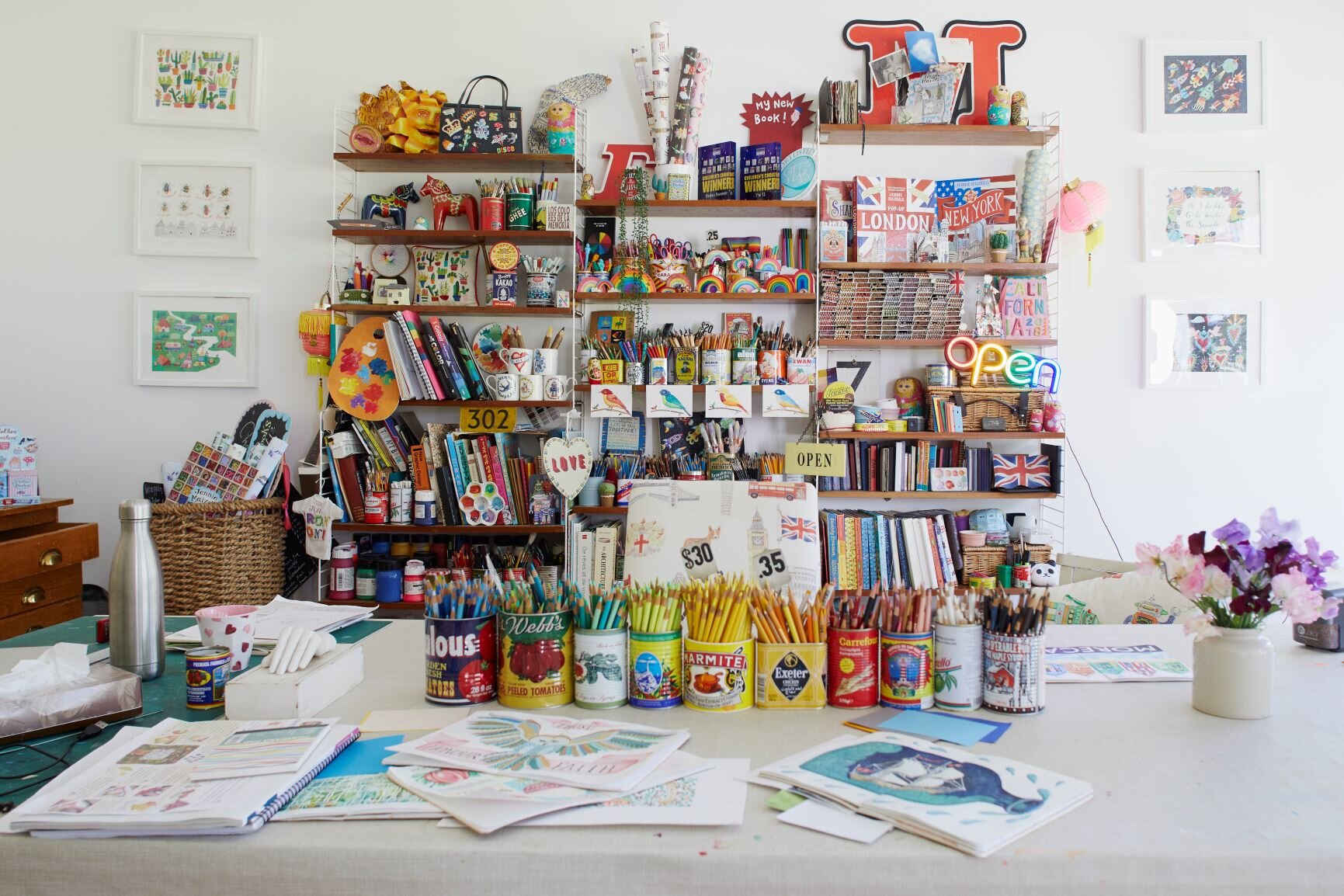A pretty project that looks great framed in a kitchen or simply makes a beautiful page in your sketchbook
Welcome again to Friday Sketchbook Club! We’ve teamed up with illustrator Jennie Maizels to bring you a sketchbook project to do every Friday in April. We hope you enjoy them. Today we’re drawing botanicals.
Jennie started Sketchbook Club because she believes that anyone can draw. Her principle is that if we treat art like any other creative pastime and follow simple instructions, just like a recipe, we would all be drawing as much as we are baking, sewing and knitting.
Each module comes with instructions, a ‘How to’ video, reference material and often, templates which you can ‘transfer’. They have been carefully designed to suit all ages and abilities. A note on materials: the projects were originally designed to introduce a plethora of different paints, collage and methods but all can be altered to use what you have available. Just substitute as you like or need.
Ready to draw the Botanicals ? Then we’ll begin. You can watch the Botanicals video tutorial here and find the references for leeks, passion fruit, and tomatoes here as well as the transfers you might need. Alternatively, you can just follow the instructions below, using the picture above as inspiration,
You will need
A sheet of A4 black paper or card
HB pencil
Set of gouache paints
One thin and one larger paintbrush (Jennie used a size 1 and a size 6)
Colouring pencils
How to draw your Botanicals
Have a good look at the reference sheets and choose a fruit or vegetable to paint.
2. Start by drawing out your composition. Feel free to transfer any of the images rather than copying them if you would prefer. To transfer onto your black paper, turn the chosen image over (it might help to cut them out first) and, using the side of your chalk, rub evenly over the whole of the back of your image, then turning the page over so the plant/flowers are on top, hold your transfer page firmly so it doesn’t move around at all, on top of your black paper. Then, using a Biro, draw over the whole of the plant or flower image.Carefully take the transfer sheet off to reveal the chalky template on your black paper.
3. Work on your composition, making sure all the chosen illustrations are evenly spaced out, maybe filling any big spaces with some seeds or petal details.
4. Next,start to paint the botanical illustrations. look at the reference, you may want to use a white pen once the base layers of paint has dried,for some of the detail (or your size 1 paint brush). Adding a little white to colour, especially the reds, yellows and oranges,will make them really jump out. For flowers or seed heads, you could use a sponge, working in darker then lighter colours, dabbing on lightly.
5. For the lettering, first of all write it in pencil in ‘best’ italics, then paint over with cream or white paint using a fine brush, paint as thin as you can,adding depth to the lettering afterwards. You could write over the pencil using a white gel pen if you are nervous about painting lettering,it looks just as good.
6. When the page is dry, add detail to the illustrations using coloured pencils. Try white pencil for very thin root strands and dark green for leaf lines.You might prefer to draw in the majority of details in pencil rather than in paint, for example, just painting a green circle for the top of the leek and once the paint is dry, drawing in all the little circles in a dark green pencil and a white gel pen or pencil.
There are many more modules available on Jennie’s website, Sketchbook Club (only £4 each.), where you can also buy art kits and supplies. For more inspiration, you can follow Jennie on Instagram @jenniemaizels or visit the website jenniemaizels.com. Look out for another Friday Sketchbook Club project with Jennie here next week.
Buy this month's The Simple Things - buy, download or subscribe






